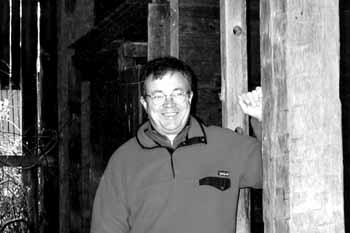
Interest in the $2-million New York State Barn Restoration Program announced last fall by Governor Pataki has exceeded everyone's expectations. Statewide over seven thousand applications were requested. The grants, intended to fund 80 percent of restoration costs to roofs, foundations, wall, sills and overall stabilization are limited to $25,000. Only an estimated 80-100 applications are expected to be approved. The awards are to be announced early this year. The program was designed to financially assist owners in the restoration and repair of historic barns and other agricultural structures. The buildings must be at least 50 years old. The objective is not only to repair and return the barns to agricultural use, but also to preserve the heritage of New York's working farms for residents and tourists. In announcing the initiative in late September, Pataki said," Some of the best scenery in New York state features historic farm buildings that remind us of our heritage. Restoring and preserving these magnificent agricultural landscapes will ensure they will be appreciated and enjoyed for generations to come." Because of the popularity of the initiative, the office of New York State Parks, Recreation, and Historic Preservation, administrators of the program, predict a continuation of funding in subsequent years. Applications were due December 15, 2000. State Senator Nancy Larraine Hoffman, who initiated the program with the Governor's office, said, "These structures are symbols of cultural lifestyles of earlier generations that tell a unique story of our agricultural history and heritage." The New York program follows earlier nationwide efforts to preserve historic farm structures. BARN AGAIN! for instance, is a national program to preserve agricultural buildings sponsored by the National Trust for Historic Preservation and Successful Farming magazine. BARN AGAIN! provides up-to-date information to help owners of historic barns rehabilitate them and put them back to productive use on farms. BARN AGAIN! publishes rehabilitation guides, sponsors workshops, exhibits and events, and presents annual awards of the best example of historic barns rehabilitated for continued farm use. Visit their Web site at www.barnagain.org Apart from New York's new Barn Restoration Program, a previously existing state program exists to aid barn owners in restoration projects. Since 1997, a 25 percent tax credit has been available for rehabilitation of historic structures - also defined as those at least 50 years old. The only condition to the tax break is that the rehab work must not "materially alter historic appearance." Owners who fail to win a grant from the Barn Restoration program may still quality for this tax break. At one time, an estimated 30,000 barns once stood in the vast Genesee which, at the time of settlement, stretched from Seneca Lake west to the Niagara River. In his book, Barns of the Genesee Country, 1790-1915 (Geneseo, 1987, James Brunner, Publisher), author Daniel Fink elaborately describes the farm structures that were part of the development of this agricultural region into what, in the 1830s and 40s, came to be known as "the breadbasket to the nation." Wheat produced in the Genesee, milled into flour in Rochester and transported east on the Erie Canal, was so prized it was sold abroad touch distinguished customers as Queen Victoria for use in the royal kitchens and bakeries. Beef raised here was also of the highest quality and highly sought after in the big cities along the East Coast. The pioneer farmers responsible for the success of the Genesee settlement built their farm buildings based on designs of the late 18 and 19th century barns left behind in their native New England. They were built from logs, hand hewn, or sawn timber in the English or Gambrel roofed style. Early barns were usually so well built they have withstood a hundred years or more of wear and still can be refitted or repaired for continued use. But the fate of many barns was quite different - as Daniel Fink describes: When a barn no longer has an active farm to serve, it may become redundant for an owner, an expensive luxury to maintain. The roof may be allowed to deteriorate, the weathered siding boards may blow off or be sold, letting in rain and melted snow to rot out the timbers and joints; slowly the structure settles upon itself, or the end may come within minutes in a violent fire. Often the first step for a barn owner interested in preserving a structure is to hire an expert in restoration. There are many barn rehabilitation service providers capable of providing the analysis, planning and recommended procedures to preserve the structure's value, character and structural integrity. A full list of consultants can be obtained from Preservation League of New York State, 44 Central Avenue, Albany, New York 12206-3002. Phone, 518-462-5658; fax, 518-462-5684; e-mail, info@preservenys.org |

